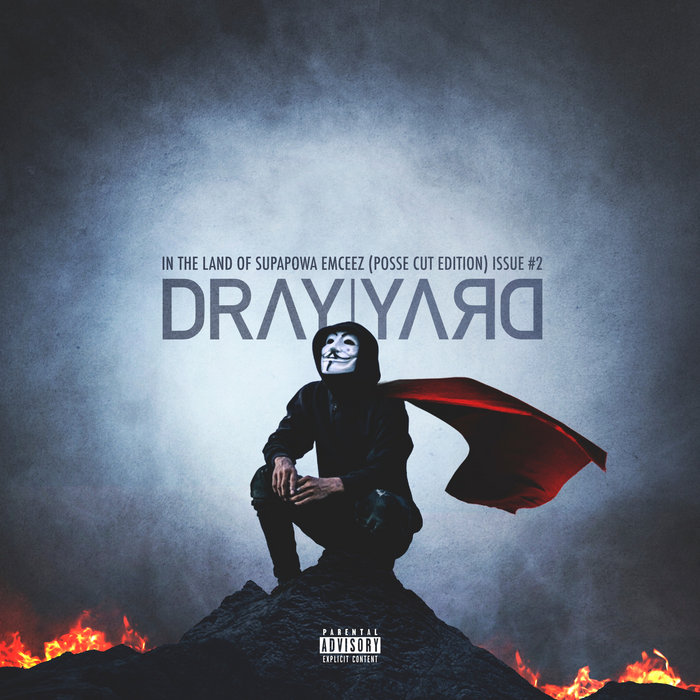
The H8ful 8 (feat. Giovonni Pratt, Evolve, Stranga The Great, Dontique, Kode Red, Doc Remedy, Kali Ranks & Big Ruk) – Dray Yard
this blog is GROOVY – check out great Soul, Funk, Jazz, Hip Hop, Bass, Breaks , Reggae, House n many more TUNES
Big Ruk, a unique blend of beats that grooves its way through the annals of music history, is a delightfully quirky genre often overshadowed by more mainstream styles. But let’s break it down and celebrate its funky roots while having some laughs along the way!
Before we dive into the time machine, you might be wondering: what exactly is Big Ruk? Originating in the late 1990s as underground urban music, Big Ruk combines elements from hip-hop, funk, jazz, and even a sprinkle of house music. Imagine if Parliament-Funkadelic threw a block party with DJ Kool Herc—boom! You’ve got yourself Big Ruk.
Pioneers like DJ Jazzy Groove and Lady Beatdrop were crucial in crafting this feel-good vibe. They took inspiration from classic funk legends like James Brown and Sly Stone but added their own modern twist. Picture bright colors flashing on stage while DJs spin records faster than your grandma can shuffle her bingo cards!
One hilarious tidbit from those early days? It was said that wherever there was an out-of-tune disco ball spinning above a dance floor during Block Parties in Brooklyn; you could bet there would be at least two folks busting out breakdancing moves so epic they’d literally knock over snacks! Yes, chips would fly when someone attempted to do that infamous windmill move—but hey—that’s all part of the fun!
As the new millennium rolled around, so did an explosion in popularity for our beloved genre. Artists began fusing sounds with crazy creativity! Instead of just sticking to traditional beats or instruments, musicians started digging into electronic samples—think synthy goodness mixed with live instrumentation.
Let’s chat about some big names who waltzed onto this scene:
MC Boogie Burnout: Known for his absurd fashion sense—imagine neon everything combined with funky sunglasses—a style truly ahead of its time! Once he showed up on stage wearing inflatable flamingos as accessories… talk about making waves!
Funky Fresh Family: This group led by siblings brought real joy to parties everywhere. Legend has it they once had their mom design custom onesies for their show; nothing says “We’re serious artists” quite like matching pajama outfits while dropping tight verses about pizza toppings.
There were notorious stories where open mic nights erupted spontaneously into jam sessions due to one misplaced keyboard note or off-beat drum hit—from then on dubbed “the Great Oopsie Moment.” If you ever find yourself scratching your head during an improvisation at Big Ruk shows—it’s probably because they decided to throw caution (and musical key signatures) to the wind!
Fast forward to today—Big Ruk has become more prominent than ever! Tracks are popping up everywhere from radio stations all over the globe to movie soundtracks looking for that perfect groove tune.
In modern-day collaborations where genres meld like peanut butter and jelly being slathered on toast—you get mind-bending jams such as DJ FunkMaster Flex teaming up with Vocalista Bouncy Beat. There have even been instances where three different genres collided at one single event—it played out something resembling “musical dodgeball”; if one artist flubbed their line—everyone else would jump ship until it morphed into something entirely unrecognizable!
And guess what folks? During recording sessions gone awry—the crew became known for pranking each other based solely around snack preferences causing major disruptions—a constant battle between vegan kale chips versus good old-fashioned potato crisps resulted in debates lasting hours longer than any recording session should take!
So here we are folks—the colorful tapestry we call Big Ruk continues evolving day after day—with every beat laying down laughter alongside those infectious rhythms bringing people together across generations.
Whether you’re dancing alone in your living room or throwing an extravagant block party packed full; remember those wild moments make this journey worthwhile—and just know anyone sporting inflatable accessories automatically guarantees instant credibility among fellow fans too! Now get grooving and keep spreading ze love!
With funky vibes still buzzing strong within these melodies striking chords deep down inside us all—the next time someone asks you about historical facts regarding specific music genres—you can confidently drop knowledge bombs not just about strumming notes but hilarious antics occurring backstage along prosperous paths navigating through soundwaves galore creating magnificent memories worth recalling always!

The H8ful 8 (feat. Giovonni Pratt, Evolve, Stranga The Great, Dontique, Kode Red, Doc Remedy, Kali Ranks & Big Ruk) – Dray Yard